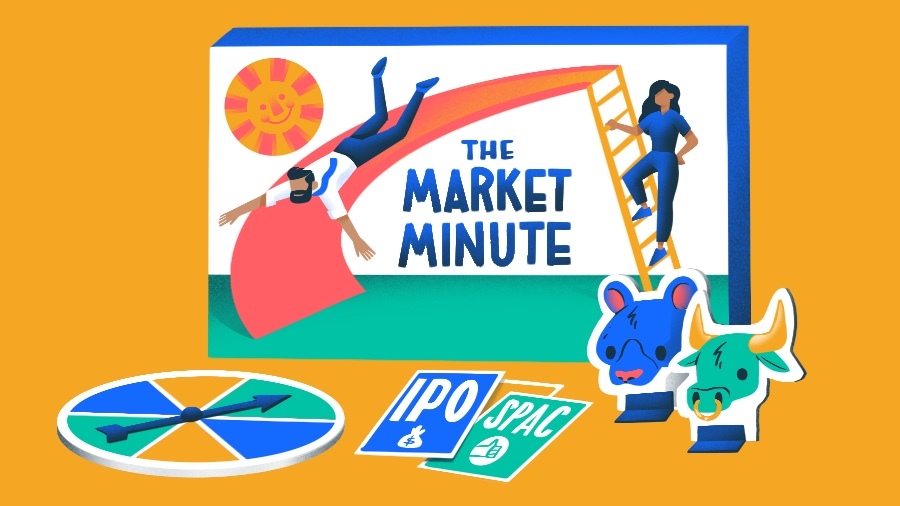The 180-day stock lockup period used to be the standard for traditional IPOs. But that’s quickly changing thanks to the increasing popularity of early lockup releases, particularly for technology companies.
Subscribe to the Crunchbase Daily
I got interested in the idea of ELRs, as they’re known, after chatting with Joshua McGinn, senior vice president of western region relationship management at the professional services firm AST. When we spoke a couple weeks ago for my previous column, McGinn mentioned that part of the reason direct listings haven’t been as popular as they were expected to be this year is because of the increasing frequency of ELRs.
So I thought it’d be helpful to dig more into what ELRs are and why more companies are opting to include them for their IPOs.
What are ELRs?
Early lockup releases allow pre-IPO shareholders to sell their shares before the standard 180-day period is up. They’re not exactly new—McGinn recalls Stitch Fix having an early lockup release when he worked on the company’s IPO in 2014—but they are becoming increasingly common.
The norm used to be that with a traditional IPO there was a 6-month period during which employees and other pre-IPO investors could not sell their shares. The idea was that this lockup period would help stabilize the stock price by preventing pre-IPO shareholders from dumping their stock as soon as the company was public.
But that’s quickly changing.
The rise of the 90-day release
Around three or four years ago, the first wave of companies started modifying their lockups to include early releases, according to Ran Ben-Tzur, a partner at the law firm Fenwick & West.
“This all sort of revolves around skepticism by investors and the venture community about lockup agreements and the purpose of lockup agreements,” Ben-Tzur said.
The change, in McGinn’s view, came about after underwriters realized there were a lot of companies going public. At the same time, increased interest in and and the rising popularity of direct listings meant investment banks were in a position to make a lot less money from the companies going public that route–direct listings are significantly cheaper than traditional IPOs because of the lack of underwriting fees.
The idea for underwriters was, “‘If we don’t do something, we’re going to be losing more and more underwriters’ fees,’” McGinn said. “‘So what if we change our business model and instead of subjecting everyone to the 180-day lockup period, we’ll make an exception?’”
Employees want liquidity, and early lockup releases give them that, while banks still get to collect the underwriter fees from an IPO, according to McGinn.
More companies have shortened that lockup release period to 90 days, while others like Unity Technologies and Airbnb allowed employees to sell shares on the first day of trading, according to Ben-Tzur. And some companies have tied an early lockup release to stock price and performance.
Many early lockup releases tend to be around 90 days, and that’s related to securities laws, according to Ben-Tzur. Pre-IPO stockholders can sell their shares under the Securities and Exchange Commission’s Rule 144. Typically, Rule 144 becomes more broadly available for use 90 days post-IPO.
Another reason for the increasing popularity of the 90-day period is that a Day One release is a lot of work. This kind of lockup release is basically like doing a direct listing because it requires companies to do more work on the front-end to make sure shares are ready for trading, Ben-Tzur said.
Company executives are already doing a lot of work to sell the deal during the IPO roadshow process, so doing a 90-day early release lets them catch their breath, so to speak.
And it can be a challenge if an employee wants to trade on Day One to make sure the retail broker gets those shares before the market starts trading, McGinn said.
It should be noted that ELRs aren’t really becoming more commonplace for pharma or biotech companies, which often go public at earlier stages and with fewer employees, according to McGinn. Rather, it’s mostly tech IPOs that have embraced them.
“There’s just a lot of innovation right now on the IPO front, and that’s been kind of pushed along by direct listings and SPACs and the venture community,” Ben-Tzur said.
Illustration: Dom Guzman

Stay up to date with recent funding rounds, acquisitions, and more with the Crunchbase Daily.





![Illustration of N. America-labeled piggy bank on an inclined plane. [Dom Guzman]](https://news.crunchbase.com/wp-content/uploads/Quarterly_n_am-300x168.jpg)
![Illustration of stopwatch - AI [Dom Guzman]](https://news.crunchbase.com/wp-content/uploads/Halftime-AI-1-300x168.jpg)
67.1K Followers